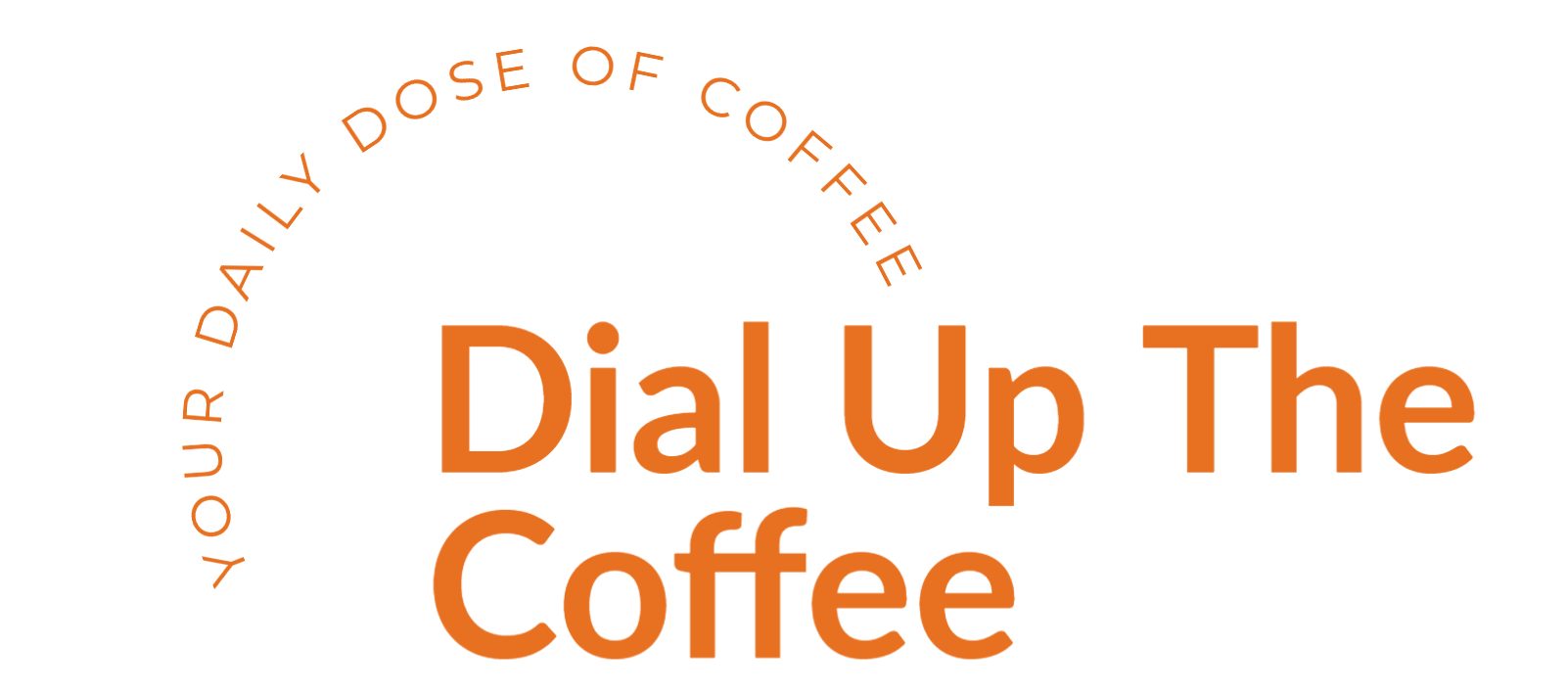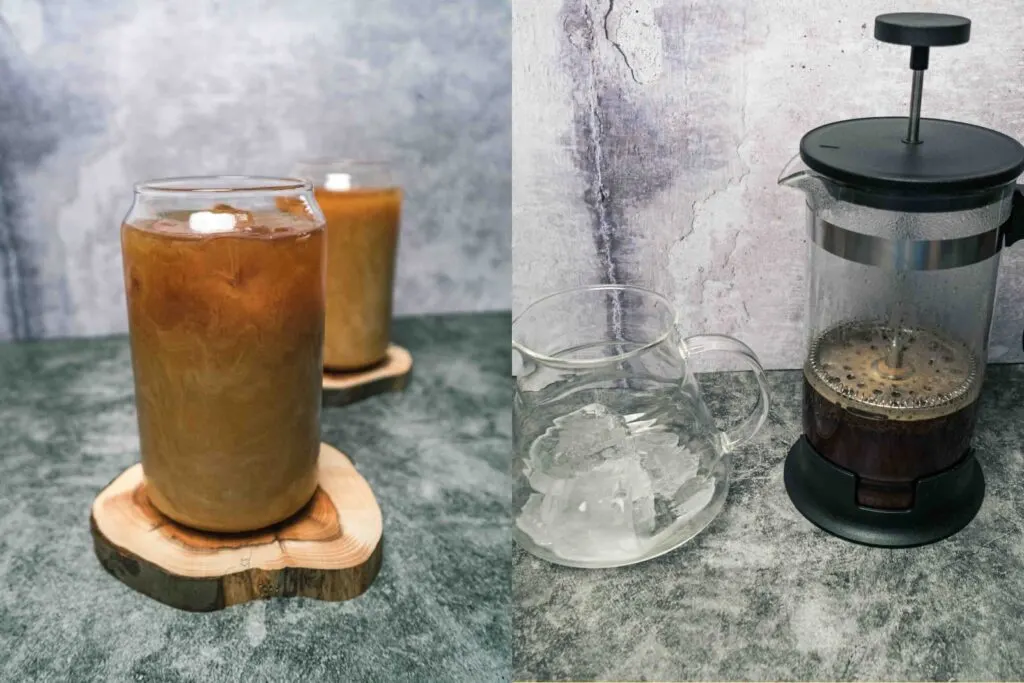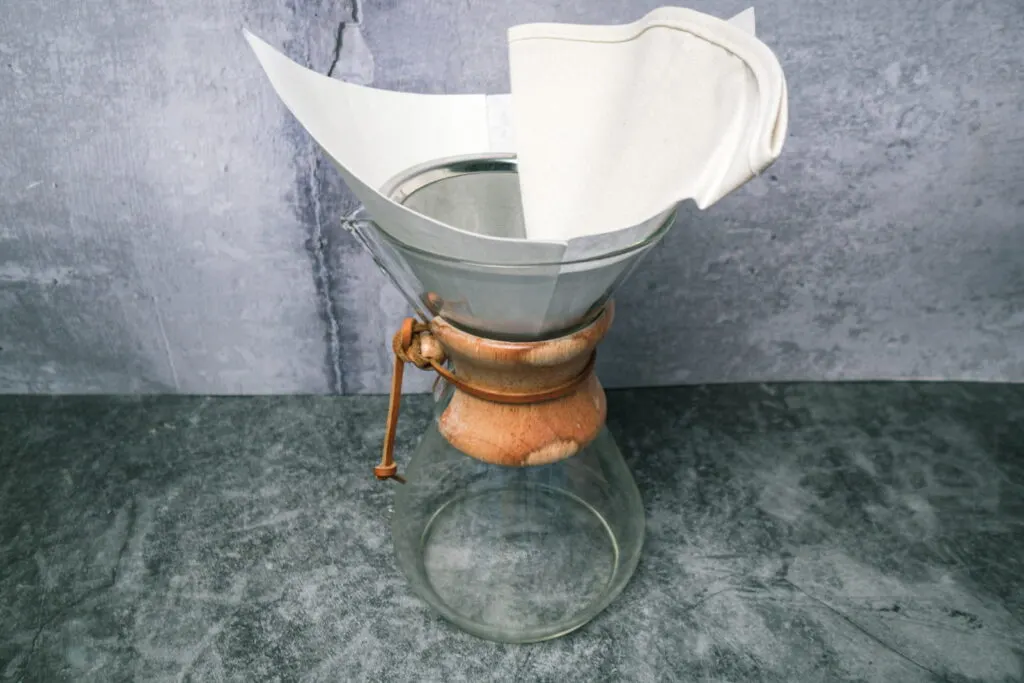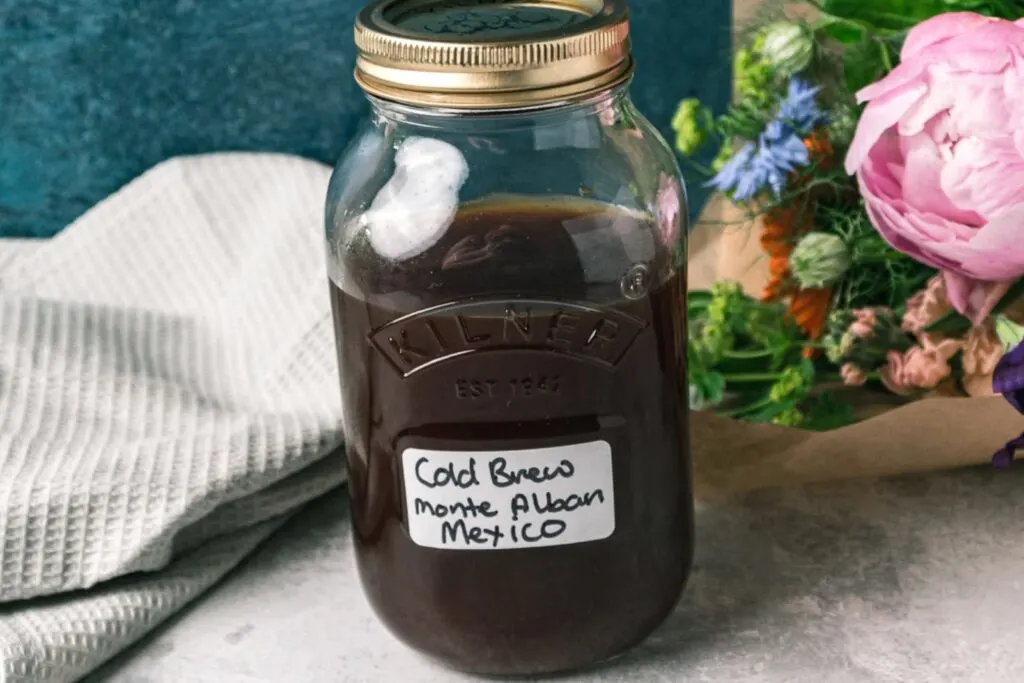If you’ve had a few different coffees in your day, you’ve probably noticed that they all had something unique about them. Coffee, depending on many factors, varies in taste quite a bit.
What should coffee taste like? Well, there is no one true taste to coffee. The taste revolves around the bean, the roasting process, and the brewing system. Each one of these factors directly impacts the taste of the coffee.
Today, we’ll be looking at how taste is determined, examining the location and quality of beans, how beans are roasted, and the brewing system. We’ll also be taking a look at the variety of quality between beans and also machines.
Disclaimer: Hi! this post may contain affiliate links which will take you to online retailers that sell products and services. If you click on one and buy something, I may earn a commission, see my Affiliate Disclosure for more details.
Taste is Personal

Before we dive into anything deep, I think it should be known that coffee taste is entirely about personal preference. Some enjoy a light roast full of cream and sugar, while others prefer a dark roast that is all-natural with zero additives.
It doesn’t mean that one coffee is better tasting than the other, as that isn’t how coffee taste is judged. What is judged, however, is the following:
- Quality of the bean
- Processes
- Origin of the bean
Location and quality go hand-and-hand, as where coffee grows specifically are what determines the quality. For example, the Kona bean from Hawaii is one of the highest-quality beans in the entire world. However, it can only be found in certain areas on the island and not all Hawaiian Coffee is of that standard.
Many Hawaii-based roasters will try and market their product as “Hawaiian coffee” due to the recognizable Kona bean. The fact is though, many of these beans are of much poorer quality than the pure Kona bean and are often sold as a blend, containing just 10% of Kona.
Taste Profiles
When it comes to breaking down the taste of coffee, there are quite a few different aspects you’ll want to be searching for.
Bitterness
Bitterness is certainly an acquired taste and will be noticed mainly after you’ve taken your first sip. The darker the roast, the more noticeable the bitterness will be.
Many people aren’t actively searching for a bitter coffee, but there are a few people that do enjoy it, including myself. It isn’t so much the bitterness, but rather the intensity you get from a dark roast, which happens to include a bitter taste.
Acidity
Acidity in coffee is a type of tang or bite to the drink that works like the opposite of bitterness. Rather than being more prominent in dark roasts, you’ll find acidity much more noticeable in lighter roasts.
If you’re a new coffee, I’d recommend trying both ends of the spectrum. This way, you can see what you prefer over the other. Personally, I feel both acidity and bitterness have their qualities to them, but it is all personal at the end of the day.
Sourness
Sourness to a coffee is generally not a good thing and is not the same profile as acidity. Generally, a sour taste to a coffee will be much more of a punch than acidity. It also generally reflects lesser quality as well, as a sour taste in not usually desired, if ever in coffee.
Sweetness
Sweetness will do more than just play with your taste buds, as it is usually a good sign of where the coffee originates from, which we’ll cover more in-depth in just a bit. For now, know that sweetness has to do with the levels of fructose or sucrose.
Depending on what you prefer, you’ll enjoy certain geographical locations than the other based on levels of sweetness alone.
Body
Lastly, we have the body. This is how the coffee feels overall, such as its texture, the ratio of flavor and milk/water, and more. This is a great sign of the coffee your drinking and it usually doesn’t take a rocket scientist to feel out a quality cup of coffee from a poor one.
Flavor Wheel
If you’re looking to go even more in-depth in your research for flavoring, there is even a flavor wheel, which can be quite confusing upon first glance.
Counter Culture made a great illustration of the wheel, which you can find here: https://counterculturecoffee.com/learn/resource-center/coffee-tasters-flavor-wheel
Main Selections
To further explain a flavor wheel, there are usually 17 types of categories that have their own subcategories, but we won’t be diving that deep into it, as it gets rather confusing at that point.
However, these main categories are:
- Chocolate
- Sweet and Sugary
- Nut
- Grain and Cereal
- Roast
- Spice
- Savoury
- Earthy, Vegetal, and Herb
- Floral
- Citrus
- Apple/Pear
- Melon
- Grape
- Tropical Fruit
- Stone Fruit
- Berry
- Dried Fruit
As I mentioned before, these categories each have their specialities, making hundreds of different types of taste. For example, chocolate has dark chocolate, bakers chocolate, and milk chocolate tastes to it.
Origins
Where the coffee beans come from have a large impact on both the taste and the quality. Now that coffee is becoming more and more popular, many are leaning towards preferring a single-origin coffee, which we’ll cover soon.
For now, let’s take a look a look at some of the most popular countries that produce quality coffee beans.
Costa Rica
If you haven’t done a decent amount of research, you may not know that Costa Rica has some of the finest coffee available. They are known for having the “classic” taste of coffee and because of the volcanic soils in the area, produce a great bean that is rich in its flavor.
One of the more well-known beans to hail from Costa Rica is the Margarita bean.
Colombia
Colombia is highly regarded as one of the most popular countries to produce coffee in the entire world. It produces over 15% of the world’s supply of coffee, which is a crazy number to think about.
Because of the sheer amount it produces, coffee from Colombia is on a wide spectrum in terms of quality. I personally feel that though Colombia is a giant in the coffee industry, it waters over the fact that they have many great coffee beans available.
However, there still are some amazing beans that hail from Columbia and even nice mixtures as well, such as Excelso, which is blended with Supremo and Extra. Columbia will continue to be one of the largest coffee powerhouses in the world, and we are seeing new techniques produce amazing coffee every year.
Guatemala
Guatemala is known for amazing quality in its coffee. It isn’t known as a mass producer like Columbia is, but is rather known for the quality it is able to provide.
Because of the geography that surrounds and that is embedded in Guatemala, it is able to produce some of the most intense flavorings in coffee in the entire world. It is a must-have for any coffee lover and quite possibly, one of the best countries to produce it in terms of quality ratio.
One of the most popular coffee beans is the Antigua Volcanic, which happens to be also one of the highest in terms of quality as well. It has such a vibrant, powerful taste that is truly one of the most unique coffee experiences in the world, and that isn’t a stretch.
Hawaii
Hawaii is known for the Kona bean. It is one of the best beans on the planet in regards to both taste and quality, and come from small patches on the island.
Hawaiian coffee, no matter the company, is always marketed as a premier batch, but be wary as there are only a few genuine companies that will produce 100% genuine Kona bean. Others will just use a small portion of Kona bean, usually 10% and mix it in with a much lower grade coffee.
Just because it has some of the Kona beans inside does not make it a quality coffee, which is what most will try to sell it as. Just remember, if you are wanting the true Hawaii coffee experience, make sure the Kona bean coffee you are getting is 100% authentic, with no blend added.
Kenya
Africa is growing in terms of its popularity, and the country of Kenya is no different. Africa is known for its vibrant and fruity mixes, which is also found in coffee grown in Kenya.
However, specifically, Kenya is known for the berry accents it provides, as well as some citrus sprouts shine through as well. These types of coffee beans are generally used in lighter roasts, as they contain quite a bit of acidity and make for great light cups of coffee.
This is typically the theme for all African coffees, as they all carry a similar tune and flavor throughout them for the most part.
Jamaica
Many people don’t realize that Jamaica produces some of the highest-quality coffee in the world. Just like the country, Jamaican coffee’s flavor speaks to the island itself. It is a calm taste that has the scents and experience of it run through each and every sip.
One of the most notable beans from the land is Blue Mountain. It represents the smooth taste well and has hardly any bitterness as well. Overall, it is one of the most balanced coffee experiences you can have, and it is something I highly recommend, despite the hefty price tag that comes with it.
Single-Origin Coffee
Single-origin coffee details coffee that originates from one area. This means practically everything is done in the same area, including the harvesting and where it grew as well.
The reasoning for the spike in popularity for this is that it really is one of the purest ways to get coffee. Ever since we’ve seen trends go towards healthier lifestyles and many new organic brands come to life, it affected the coffee world as well.
If it provides a healthier and more authentic coffee, why wouldn’t customers want single-origin coffee? Since there is no real argument against it in a negative light, I see the trend only becoming more popular as time goes on.
In fact, you can even see the growth now and how it is affecting many companies and how they target their coffee.
Roast Levels
One of the primary ways coffee develops its taste is dependent on its roast. There are four different types of roasts all together, ranging from:
- Light Roast
- Medium Roast
- Medium-Dark Roast
- Dark Roast
Light roasts
Light roasts are considered the “mild” taste for coffees. The taste that comes through isn’t strong and there is no bitterness to them either. The beans themselves are a light brown and they should be dry as well.
Medium Roasts
Medium roasts are one of the most popular types around and are even the most popular in the United States. It is a step-up from the light roast in terms of taste and is considered a “standard” cup of coffee.
The bean itself is a brown color and it will also be dry as well, with the oils yet to be visible.
Medium-Dark Roasts
Medium-dark roasts are right on the bridge between medium and dark roasts. If you enjoy a bit of bitterness but not as much as a typical dark roast offers, this is the perfect type of roast for you.
These beans will be a bit darker, being a dark-brown color. There will also be some oil that comes through as well.
Dark Roasts
Finally, there are dark roasts. These beans are practically a black color that will have the surface covered by a glaze of oil as well. This is the most bitterness you’ll find from a coffee taste, as well as the strongest.
Roasting Process
In simple terms, the roasting process refers to what “level” if you will, the coffee is roasted. This is the step before brewing and there are many steps during this time, including:
- Roasting
- Cooling
- Sorting
- Packaging
Common Names
These roasts also have common names associated with them as well.
- Light Roast- New England, Cinnamon, Half City, American
- Medium Roast- Fully City, City, City Plus
- Dark Roast- Italian, French, Full City Plus
These names also refer to the temperature they are cooked at. For example. A City roast is cooked somewhere between 420-430 degrees Fahrenheit.
The Captain’s Coffee has done a great breakdown of each level of roast via temperature, which you can find here: https://thecaptainscoffee.com/pages/roast-levels
Brewing Process
Last but certainly not least is the brewing process. There are quite a few brewing methods out there, but there are typically four main processes that a person or business will choose to utilize.
What Is It?
If you aren’t exactly sure what the brewing process is, it is where basically the coffee is filtered into making a drinkable cup of coffee.
Decoction
The first method is decoction, otherwise known as boiling. This was a popular, if not the most popular way coffee would be brewed for quite some time. This was done with boiling water being poured over ground coffee, which is then cooled as it pours through into the bottom of the cup.
This is also one of the simplest ways to brew coffee as well and is great for camping or other similar events. Also, some countries still use this form of brewing as well, due to its simplistic and cost-effective methods.
Also, instead of water, sometimes warm milk is used, depending all on preference. Personally, I think the milk interferes too much with the taste of the coffee, so I prefer water.
Overall, some perks include:
- Simplicity
- Can be done on the go
- Perfect for wallet/camping
Steeping
Steeping is considered the simplest process for brewing coffee. This is done with a mixture of coffee and really hot water, but not yet to the point where it is boiling. This is also considered the “purest” form to drink coffee as well.
Many experts agree that it gives the one who is drinking it the best, the rawest experience for drinking coffee, as it is just the coffee and the water interacting with one another. It filters quite similar to a drip method, but because there is not really any barriers for the beans to cross in order to provide its taste, it comes through much more effectively.
Personally, I do have to agree that steeping is the best form to drink coffee for the taste, as it is the purest. However, the timing is quite easy to mess up if you aren’t careful, so you’ll want to understand it is what you’re doing before experimenting with steeping.
However, if you’ve already crafted your coffee through the process and became good at it, then you know just how good it actually is.
Overall, some perks include:
- Strongest taste out of methods
- Simple
- Purity
Filtering
This is also referred to as the “drip” method and is what you’ll see in common coffee makers, especially in the U.S. The process for dripping through a standard coffee maker is that the grounded coffee is put in a coffee filter, while water is added.
Machines will typically heat up the coffee and create the heat for it, but many places still do the process manually as well. If done manually, the hot water is poured through a funnel that acts as a filtering device as well.
This is by the most popular form of coffee being brewed, especially in places like the U.S., Canada, and the United Kingdom. It is quite convenient and is automatic as well, which is why I think the drip method has become one of the most widely accepted methods.
For filtering, some of the perks include:
- Done quickly
- Automated
- Large amounts can be made
Pressure Infusion
Are you a big fan of espressos? Well, then you are probably familiar with this process. This method is used to make coffee extra fine and is done through a particular machine. We’ll get into machines in just a bit, but for now, just know these machines usually feature a pump or pipe design.
Espresso, like many other forms of coffee, is truly an art to make and takes plenty of trial and errors to perfect the craft. However, once you are able to get it down, they are some of the best drinks I’ve ever had.
I will say though; espresso is certainly an acquired taste, so make sure you’ve had it before looking to invest in making it, as it can be rather pricey doing it on your own. However, if you are just sticking to getting them here and there at your local coffee shop, then no need to worry about it.
- Fantastic taste
- Extra fine feeling
- Creates special drinks, such as espressos.
Best Coffee Makers
Just when it comes to coffee beans, the machine you put them through will determine the taste and the quality you get out of them. If you’re looking to purchase high-end coffee beans, then you’ll want to make sure your machine matches what is going inside of it.
It would be like buying a Rolex face and putting it on a Timex band, the two just don’t mix well together. However, if you’re just looking for just a standard cup of coffee and purchase a bag of regular ground coffee, then a standard maker will work just fine.
Here are the best coffee makers:
- Technivorm Moccamaster 59462 Coffee Brewer
- OXO On Barista Brain Coffee Maker
Here are the best espresso makers:
- Breville the Barista Express Espresso Machine
- De’Longhi EC155 15 Bar Pump Espresso and Cappuccino Maker
Want to know more about them? We’ll be taking a deeper look at some of the best coffee makers available for you to buy right now.
Technivorm Moccamaster 59462 Coffee Brewer
Technivorm offers one of the best brewers currently available for purchase, hands down. It has simple operation, with just one button needed. The brew time is also short, with it being on average, five minutes.
It is made with metal housings and is free from the following:
- BPS
- BPA
- Bpf
- Phthalate
- Plastics
One of the best aspects about this is the size of the machine, which allows it to make a large amount of coffee at once, while still holding a standard of quality to its name. This is perfect for a small office full of coffee enthusiasts, as it is large in size and produces great coffee as well.
OXO On Barista Brain Coffee Maker
The OXO machine here is quite unique. Instead of a traditional drip method like many machines do, OXO has incorporated a method that tries to act as a pour-over method. It does this with the microprocessor that is operated by the brewing process alongside thermal heating control as well.
Also, the showerhead design improves the flavor profile of the coffee as well, which is always a nice touch.
Top Espresso Machines
After looking at a couple of the top coffee makers, I figured it’d only be fair to share a couple of the top espresso machines.
Breville the Barista Express Espresso Machine
If you are looking for one of the best machines currently out there to purchase, look no further. Dose-control grinding provides assurance that it pours the perfect amount every time. Everything that is offered with this machine is of top-notch quality, and it is hard to argue it isn’t one of the best around today.
You’ll find one of these machines sitting around $550, but some even go upwards of the $600 range.
De’Longhi EC155 15 Bar Pump Espresso and Cappuccino Maker
I figured that I had to put a more wallet-friendly machine on here, as not everyone can afford to drop $600 on an espresso machine. De’Longhi offers an affordable, yet high-quality machine in this package, that just dishes all of the fancies look for a simplistic design and maximum effort put towards technology.
This will cost you around $100, which is much more reasonable, as compared to other high-end machines.
Recap
Wow, I’m sure that was a lot of information to take in at once. If you are new to the world of coffee, I’m sure quite a bit of that felt overwhelming, but trust me, everyone is who is just diving into the subject. Many people do not realize just how intricate coffee as a whole is, and the many steps that go into making a quality cup.
I figured a recap would be beneficial, considering a short refresher of all the content you just took in may settle everything for you. In short, the taste of coffee comes from a variety of different factors. These include:
- Origin
- Roast
- Brew
- Machine
- Quality
These are the main factors that go into what develops the taste of a coffee. The origin of the bean is a large factor, due to the environment of where it grows, as this provides much of the natural taste. For the roast levels, this also will affect the taste, such as the bitterness or acidity to the drink.
The type of machine/brewing method will also affect the taste, as this determines what flavors may or may not be filtered heavily. Finally, the overall quality of the bean determines just how much “punch” if you will, is packed within the bean, as such as the strength of flavor and so on.






